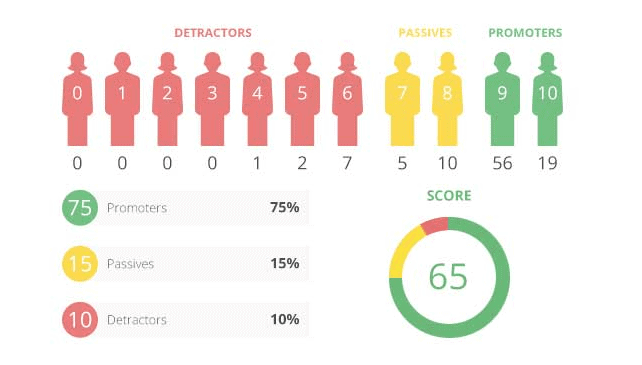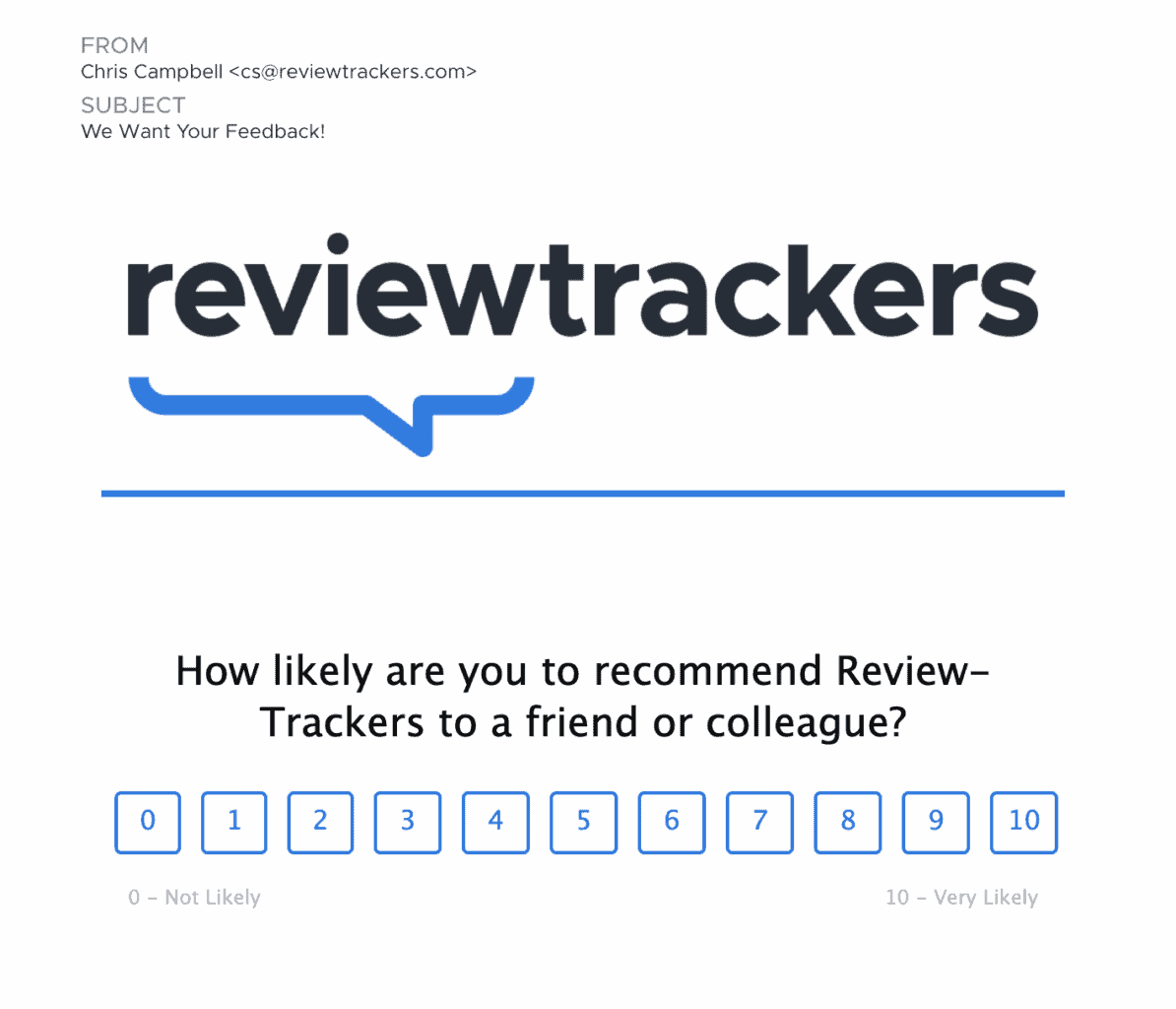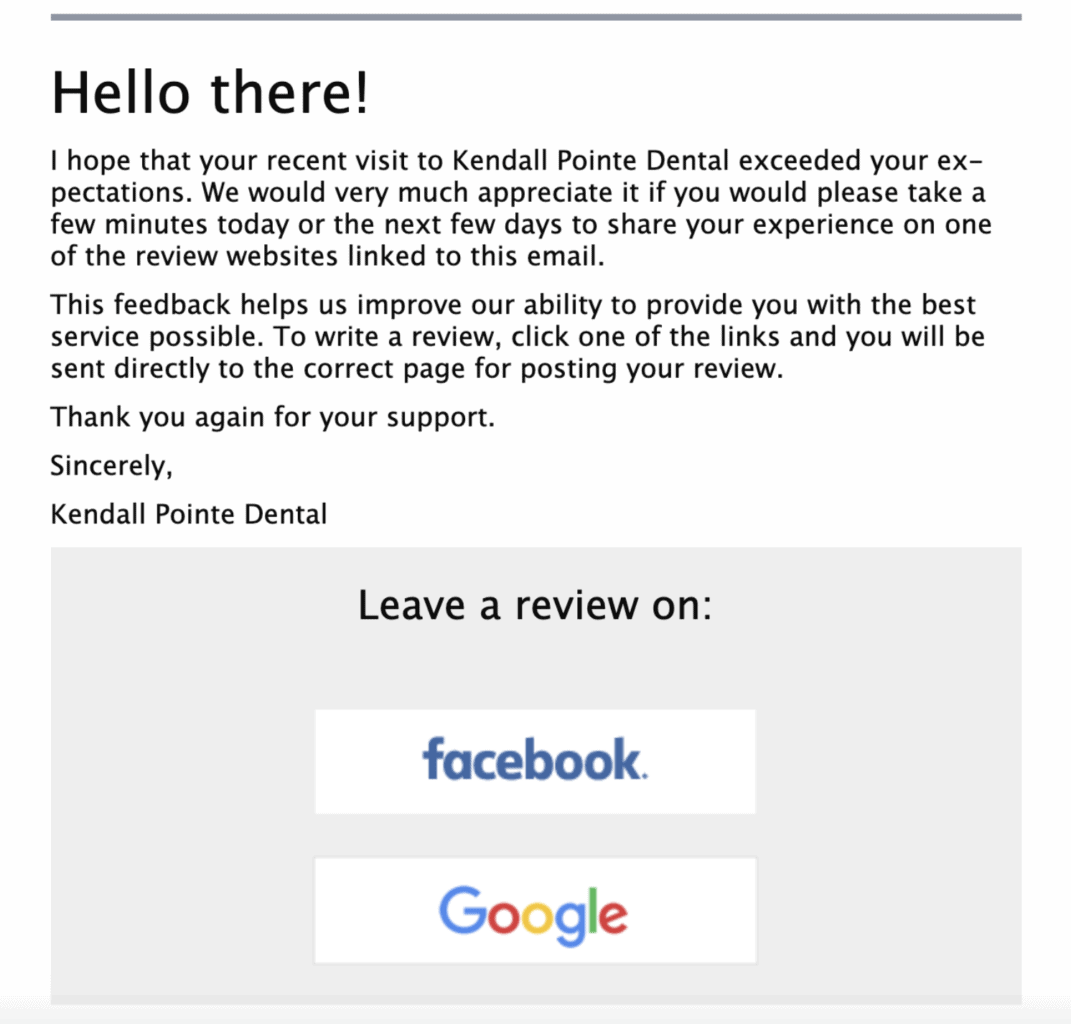Successful brands and marketers know how to manage online reviews in ways that attract customers. One strategy is to generate new reviews through the Net Promoter Score (NPS).
By using NPS to drive reviews, your business makes it easy for customers to share their experiences on business review sites — while isolating dissatisfied customers for follow-up before they spread negative word of mouth.
Why is NPS Useful?
First introduced by Frederick Reichheld in his Harvard Business Review article, the Net Promoter Score survey methodology is one of the most widely used customer satisfaction metrics for businesses today.
Specifically, the NPS survey is useful for gauging the loyalty of a customer to a business. When you use NPS for reviews, your survey will usually ask this question:
“On a scale of 0 to 10, how likely is it that you would recommend our company, product, or service to a friend or colleague?”
Based on the responses, you’ll be able to categorize your customers into Promoters, Passives, and Detractors.
Promoters (score 9 to 10) are very satisfied customers and loyal enthusiasts who can help fuel your business growth by buying and referring others to your business.
Passives (score 7 to 8) are also satisfied customers, but their lack of enthusiasm renders them vulnerable to offerings from the competition.
Detractors (score 0 to 6) are dissatisfied, unhappy customers who may impede your growth and spread negative reviews about your business.
To calculate your Net Promoter Score, simply subtract the percentage of Detractors from the percentage of Promoters.

What is Considered a Good NPS?
Based on global NPS standards, any score above 0 is good, because this means you have more NPS promoters than detractors; however, a score below 30 means there is plenty of room for progress. A score of 50 and above is excellent and anything above 70 is world-class.
The best way to know where your business stands is to look at other businesses in your industry. You can download this Satmetric report to find out which companies have the highest NPS in their industry this year.
Does NPS Really Work?
One limitation of NPS is that, for larger organizations, it may be too simplistic of a metric. The methodology works best if paired with other customer feedback tools, or when you add follow-up questions to investigate the customer experience in greater detail.
Having said that, NPS is easy for everyone within your organization to understand. It supports your customer experience management efforts and is particularly great for segmentation. You can organize data about your customers based on their category and track the score over time, so you can benchmark it and see how well you’re doing as you evolve.
Use NPS and Reviews to Supercharge Your Online Reputation
When building your online business reputation through customer reviews, one important consideration your business should make is how to identify which customers are happy and satisfied with their experience — and therefore likely to share a positive review — versus which ones are not so thrilled.
This is where you should apply the Net Promoter Score methodology. It offers a great way to leverage your NPS promoters, invite them to refer friends, and ask them to leave reviews of your business.
You can fully automate this process with reputation management software like ReviewTrackers. Here’s an example of how NPS surveys for reviews might look like:

When using NPS to drive reviews, you should follow these best practices:
Make It Easy for Promoters
It’s important to keep things simple and make it easy for your promoters to write and publish their review. The review request that follows your initial NPS survey can look something like this:

Important note: not all review sites allow businesses to request reviews from customers. Ensure that your efforts are in compliance with each individual review site’s guidelines.
Don’t Forget to Engage with Detractors
If your NPS reviews survey happens to uncover a few detractors, you should use this opportunity to reach out privately and ask for details about their experience. Many times, you’ll find that customers complain about something you have already solved, or they are looking for a product or service that you already plan on providing.
In any event, you should take the time to attend to every customer’s needs and solve their specific problems. This is the most effective way to recover your detractors and prevent negative reviews from happening.
Thank Customers for Their Feedback
You should write a personalized “thank you” response to every customer that responds to your NPS reviews survey, regardless of whether they’re a promoter, a passive, or a detractor. After all, they took time out of their day to answer your question.
A personalized response also serves as a sign of appreciation and respect for customers doing business with you. It’s a simple gesture that goes a long way in strengthening customer relationships.
Final Thoughts
Using NPS to get more reviews is one of the smartest ways to build your business’s online reputation. It’s also a great way to support your customer experience management goals by delivering actionable customer insights that can be shared with executives across all levels of your organization.
By having the ability to identify customers who are likely to recommend your business, you can more easily build a community of brand advocates.